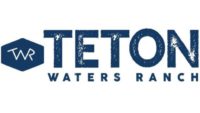Independent Thoughts
Teton Waters Ranch taking grass-fed and finished hot dogs to school
The brand’s Teton Taste Buds program seeks food Industry buy-in to improve school meals and children's nutrition.

With the goal of reducing childhood obesity and preventing associated chronic and life-threatening diseases like diabetes, heart disease, cancer and dementia, Teton Waters Ranch has launched the Teton Taste Buds program.
The Teton Taste Buds pilot program aims to make its grass-fed and finished beef products available to all children through partnering with schools to upgrade offerings on their cafeteria menus.
The Colorado-based marketer of 100% grass-fed and finished beef products is starting in its own backyard, adopting the Thompson School District in Loveland, Colo. Teton Waters Ranch is switching the district feeding program’s hot dogs to a 100% grass-fed and finished hot dog from Teton (at no additional cost to the district or families) beginning in January 2023, Teton Waters Ranch CEO Jeff Tripician said.
Compared with grain-fed beef, grass-fed beef contains up to six times more Omega-3 fatty acids, which research suggests help prevent many chronic conditions that make up America’s health crisis. Grass-fed beef also contains more of vitamins A, B and E, and other antioxidants compared to grain-fed beef, while having less saturated fat.
“As a father and grandfather, myself, I’m often horrified by the ingredients in foods I see kids consuming, by the staggering statistics around childhood obesity and even more so by the fact too few food brands are doing anything about it,” Tripician said. “Adopting the Thompson School District and covering the additional 12 cents per hot dog is just the beginning of getting better foods into school lunch programs. We are calling on everyone in the food and beverage industry to step up and be part of a positive change in the diet and health of America’s children.”
Through its participation in the Teton Taste Buds program, the Thompson School District agreed to share information so that it can replicated by other like-minded nutritionists and culinary professionals at other school districts,” he said, adding that there are 13,800 school districts in the U.S.
Thompson School District’s dedication to community partnerships and providing healthier options for students made them a good fit to launch the Teton Taste Buds program, aligning with the district’s effort to locally source as much of our food as possible, said Lisa Kendall, Thompson School District director of nutrition services.
“Our Nutrition Services Department is thrilled to partner with Teton Waters Ranch on this exciting new program to further the mission of our entire team to provide nutritious, great-tasting food through the approximate 8,000 meals we serve each day,” Kendall said.
Tripician said improving the eating habits of this generation of schoolchildren requires buy-in from businesses across the U.S., and Teton Waters Ranch is seeking like-minded companies to join its Teton Taste Buds effort. Food brands can adopt a school district in their hometown and Teton Waters Ranch will provide 100% grass-fed hot dogs at cost for the school nutrition program.
“For an item like a hot dog, for an average-sized school district it only costs about $15,000 for a year. That’s not prohibitive for most businesses,” he said. “Pick the local school district, reach in and upgrade something on those kids’ menus. Show them they care.”
The Teton Taste Buds program also includes opportunities for retail and foodservice businesses to get involved.
Chefs and restaurant owners can take part in the Teton Taste Buds program by putting Teton’s hot dogs on their menus, and for every Teton hot dog served at their restaurants one hot dog will be upgraded at a school district in need. For participating retailers, for every Teton hot dog a customer purchases, a portion of proceeds will go toward upgrading hot dogs in school cafeterias.
Teton Waters Ranch announced the launch of the Teton Taste Buds program at Edible Institute on Oct. 1. The brand is partnering with Edible Communities as the primary sponsor for Edible for Kids, a program that develops bilingual educational materials on agriculture and food production.
“If you really want to make a difference you don’t try to get into 100 million households, you go to the 98,000 public schools in the U.S.,” Tripician said.
Looking for a reprint of this article?
From high-res PDFs to custom plaques, order your copy today!
.png?height=96&t=1647275041&width=96)






